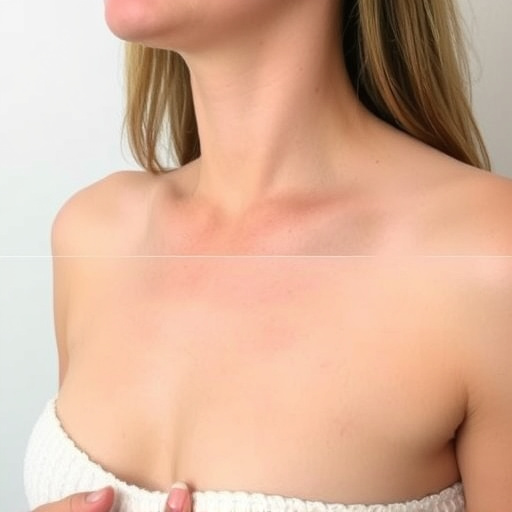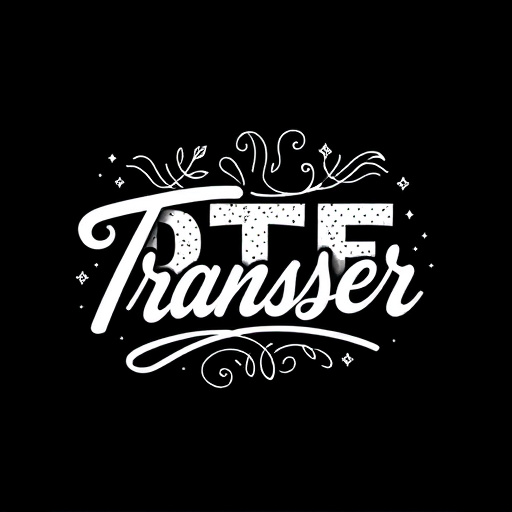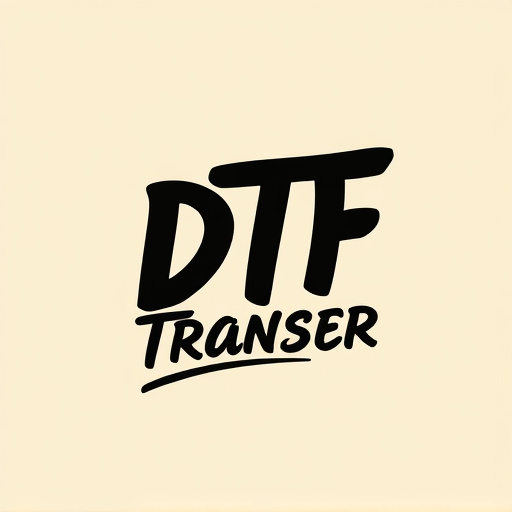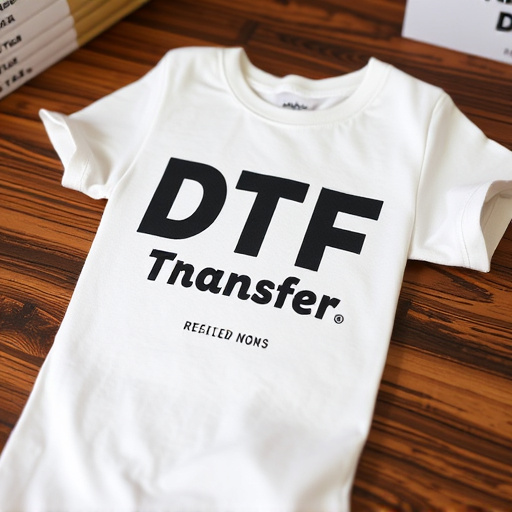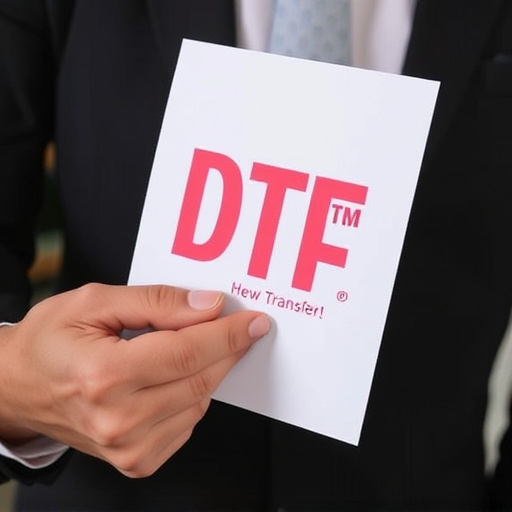Direct-to-film (DTF) transfer is a cutting-edge printing technique for custom apparel, offering precise color reproduction and versatility in design complexity. Ideal for small businesses and individuals, it combines cost-effectiveness, efficiency, and fast turnaround times. DTF allows intricate designs on various garments and surfaces, appealing to dynamic market demands. Choosing the right inks and substrates is crucial, while robust quality control ensures excellence. This method is revolutionizing fashion with its ability to produce full-color, custom designs swiftly, aligning with evolving consumer preferences for personalized, on-trend clothing.
Direct-to-film (DTF) transfer printing has emerged as a revolutionary technique, offering designers an innovative way to bring their creative visions to clothing. This article delves into the intricacies of DTF transfer, exploring its comprehensive overview and advantages for clothing design. From understanding the process to identifying suitable garments, choosing inks and substrates, implementing quality control, and analyzing market trends, we provide an in-depth look at how DTF printing is transforming the fashion industry.
- Understanding Direct-to-Film (DTF) Transfer: A Comprehensive Overview
- Advantages of DTF Transfer for Clothing Designs
- Suitable Clothing Items for DTF Printing Techniques
- Choosing the Right DTF Ink and Substrates
- Implement Effective Quality Control Measures for DTF Transfers
- Market Trends and Future Prospects in DTF Clothing Design
Understanding Direct-to-Film (DTF) Transfer: A Comprehensive Overview
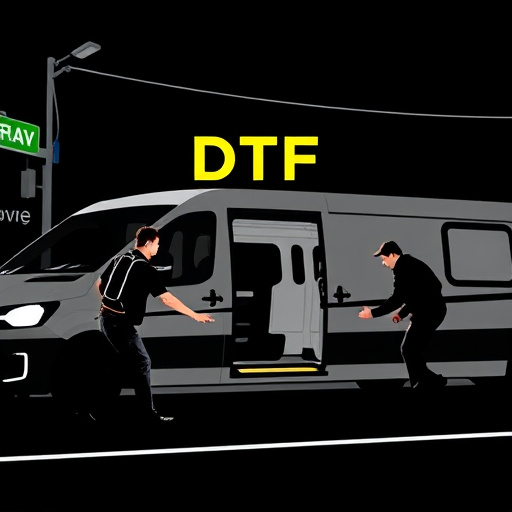
Direct-to-film (DTF) transfer is a cutting-edge printing technique that allows for high-quality, intricate designs to be applied directly onto various clothing items. Unlike traditional methods that rely on screens and inks, DTF uses heat to fuse fine polyurethane film patterns onto fabrics, offering unmatched precision and vibrancy in color reproduction. This technology has revolutionized the custom apparel industry by enabling the creation of unique, personalized garments with complex artwork and detailed images.
DTF Transfer is particularly versatile, suitable for a wide array of clothing items including t-shirts, hoodies, sweatshirts, and even accessories like bags and hats. Its ability to produce sharp details and full-color graphics makes it ideal for both simple text designs and intricate illustrations. The process is efficient, allowing for quick turnaround times, which is beneficial for small businesses, startups, and individuals looking to bring their creative visions to life promptly. Moreover, DTF transfer can be applied to various fabric types, ensuring that garments maintain their comfort and durability while showcasing stunning artwork.
Advantages of DTF Transfer for Clothing Designs

Direct-to-film (DTF) transfer offers numerous benefits for clothing designers seeking to bring their creations to life. One of its key advantages is the ability to produce complex, high-quality designs with vibrant colors and intricate details on a variety of fabrics, from cotton tees to denim jackets. This method eliminates the need for costly screen printing set-ups, making it an affordable option for both small businesses and individual artists.
Moreover, DTF Transfer allows for fast turnaround times, which is crucial in today’s fast-paced fashion industry. Designers can quickly convert their digital artwork into physical garments, enabling them to respond swiftly to market trends and customer demands. This efficiency, coupled with the versatility of DTF technology, makes it an attractive choice for creating unique, on-trend clothing pieces that stand out in a competitive market.
Suitable Clothing Items for DTF Printing Techniques

Direct-to-film (DTF) printing techniques are a game-changer when it comes to customizing clothing items. This innovative method allows for intricate designs and vibrant colors, making it suitable for a wide range of garments. T-shirts, hoodies, and sweatshirts are perhaps the most popular choices due to their versatility and high demand in the fashion industry. The flat surface of these items lends itself well to DTF transfers, enabling designers to create bold and eye-catching graphics.
Additionally, DTF printing can be applied to caps, mugs, phone cases, and even fabric home decor items. This adaptability makes it an attractive option for small businesses and entrepreneurs looking to offer unique, personalized products. The process is efficient, allowing for fast production times, which is ideal for meeting the demands of a dynamic market. With DTF Transfer as a key component, clothing designers can bring their creative visions to life on various fabric surfaces.
Choosing the Right DTF Ink and Substrates

When designing for direct-to-film (DTF) transfers, selecting the appropriate ink and substrates is a crucial step. The right DTF ink should offer vibrant colors, excellent adhesion to various fabrics, and fast drying time. Eco-friendly options are increasingly popular due to their low odor and minimal environmental impact. Substrates, or the materials onto which designs are printed, vary from traditional paper to more durable synthetic films. Choose substrates that align with your clothing item’s intended use – for instance, a heavier, cotton tee might require a more robust substrate than a lightweight silk scarf.
Consider factors like fabric type, colorfastness, and wash durability when making your selection. Some DTF inks perform better on specific fabrics, such as polyesters or natural fibers, so research and test different combinations to ensure the best outcome for your desired clothing items.
Implement Effective Quality Control Measures for DTF Transfers
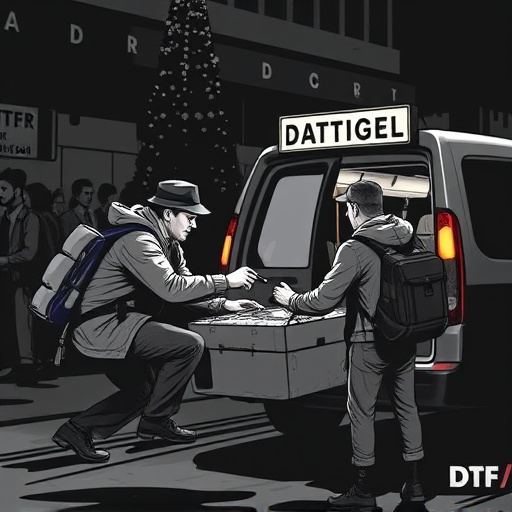
Implementing robust quality control measures is paramount when it comes to ensuring the excellence of Direct-to-Film (DTF) transfers for clothing applications. This process involves meticulous inspection at each stage to detect even the slightest imperfections, from ink consistency and film alignment to final garment printing outcomes. High-resolution imaging techniques and specialized lighting can aid in identifying issues that might be invisible to the naked eye.
Regular training sessions for quality control personnel are essential to familiarize them with DTF Transfer standards. They should be adept at using reference charts and comparing printed samples against established benchmarks. Consistent application of these measures not only guarantees high-quality garments but also streamlines production, minimizing waste and maximizing customer satisfaction.
Market Trends and Future Prospects in DTF Clothing Design

The Direct-to-Film (DTF) printing method has been gaining significant traction in the clothing industry, reshaping market trends and opening up new possibilities for designers and manufacturers. This innovative approach allows for intricate, full-color designs to be applied directly onto various fabric surfaces, enabling a level of creativity and customization previously unattainable with traditional printing techniques. As a result, DTF transfer is becoming increasingly popular among both independent designers and large-scale producers.
Looking ahead, the future of DTF clothing design appears promising, driven by advancing technologies and evolving consumer preferences. The industry is expected to see further integration of digital printing, offering faster production times, reduced waste, and more sustainable practices. Additionally, the rise of e-commerce and personalized styling will likely drive demand for unique, on-trend designs that can be swiftly brought to market. This trend towards customization and quick turnaround times positions DTF as a key enabler in shaping the future of fashion, where designs can be effortlessly adapted to individual styles and preferences.



